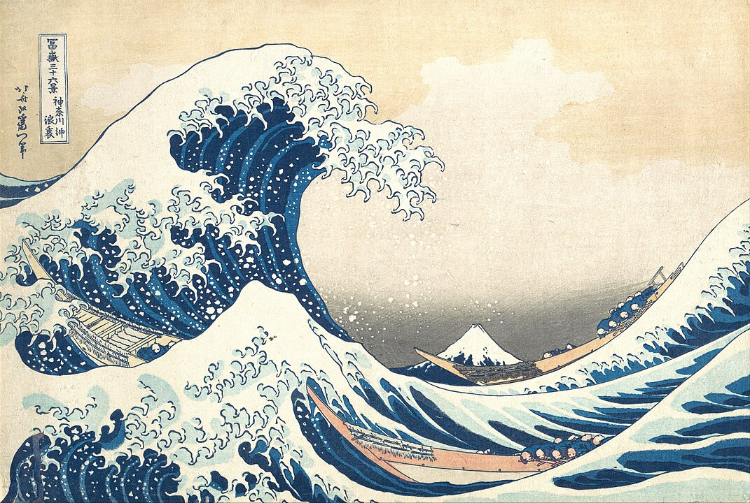The Great Wave off Kanagawa by Hokusai

The Great Wave off Kanagawa
Or, just The Great Wave. And who knows what Hokusai called himself each time a new print was made? He constantly changed his name each time he undertook a new piece.
The Great Wave is an example of a wood block print fashionable in Japan in the early 19th century. Though the wave is the most prominent feature of the print, the image is part of a series - Thirty-six Views of Mount Fuji. If you haven't noticed it before, the mountain is still center stage in the image.
Though often referred to as a tsunami, the wave is more likely a rogue wave, clocking in at a mere 33 ft (10 m). The foam of the wave takes on the form of skeletal hands, threatening the fishermen in the boats below, and rendering discussions about what to call the wave moot from their point of view.
From Europe to Japan
Hokusai modeled his composition after Dutch paintings that arrived in Japan before the island was sealed off from the world for a few centuries.
As such, he added some uncharacteristic European flair. The image is composed using linear perspective, so the mountain recedes in the background due to its distance from the viewer rather than consuming a greater space to demonstrate its relative importance.
In addition, the wave is primarily tinted with Prussian blue - a very European color that had just become widely available on the cheap to artists in Japan.
...and back to Europe
The use of bold color in the painting and the emotion expressed through the energy of the wave helped kick off the Impressionist movement in France a few decades later, once Japan opened its shores to foreign trade again.
In addition, the novelty of the style of work led to the Japanisme craze in Europe, enticing well-off people through out the continent to acquire any artifact resembling Asian art to prove to their neighbors that, they too, were rich enough to understand art and culture.
